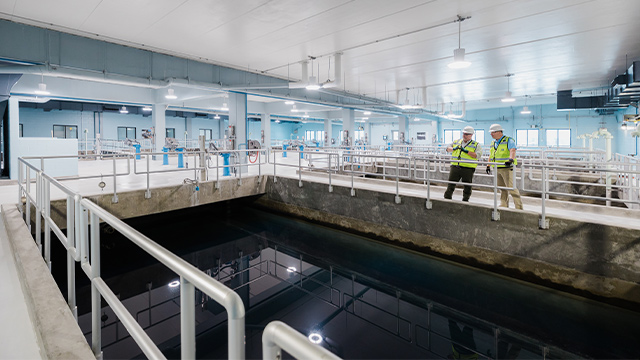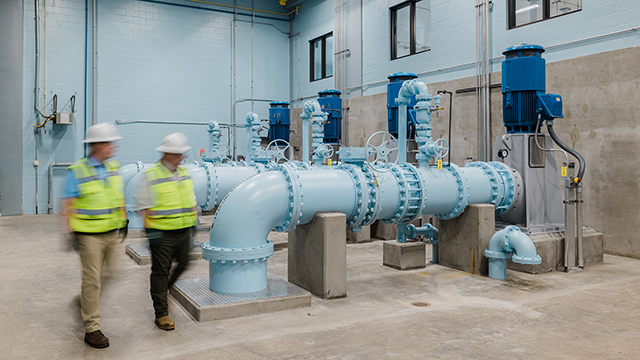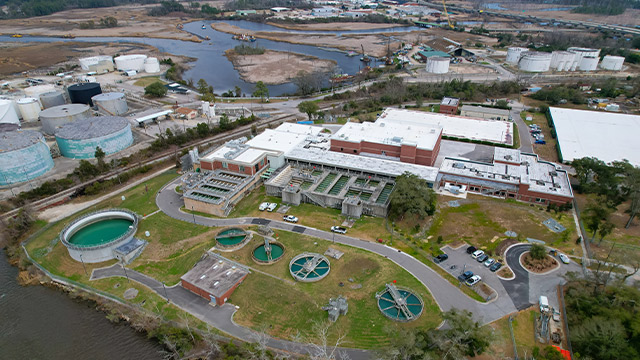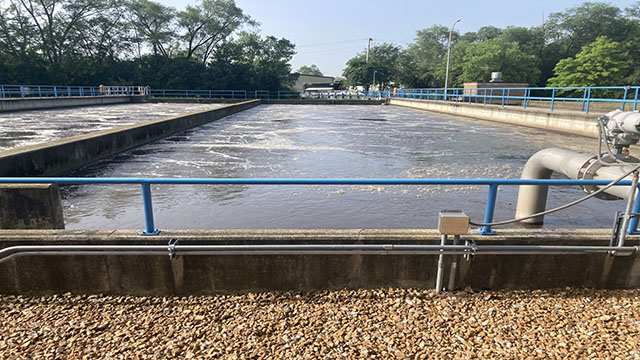Per- and polyfluoroalkyl substances (PFAS) are found in many household and industrial products and referred to as “forever chemicals” because they do not readily break down in the environment. Due to their widespread use and insidious nature, they are now present in water sources, air and soil across the globe. PFAS mitigation has the potential to prevent related illnesses that may be caused by long-term exposure.
In 2023, the U.S. Environmental Protection Agency (EPA) proposed the first-ever drinking water standard for PFAS. The proposed National Primary Drinking Water Regulation (NPDWR) aims to protect public health from PFAS contamination through these legally enforceable limits for six PFAS contaminants known to be found in drinking water. The new regulation is expected to be finalized in the first quarter of 2024, with compliance mandated by 2027. Water utilities are understandably growing concerned about how to efficiently and affordably meet these standards. Fortunately, modular water treatment solutions are available for rapid and emergency deployment. Water utilities should consider the following three benefits of using modular solutions for immediate relief from PFAS and other contaminant concerns:
1. Relieves regulatory, customer pressure
With a ubiquitous and pervasive reputation, PFAS have become a hot topic in media and entertainment. Popular movies and documentaries have been released, and many high-profile brands have issued statements about phasing PFAS out of all their products within a certain timeframe. Although there is debate about the need for immediate action, public perception is reality. Therefore, it’s critical for water utilities to appropriately address regulatory agency demands and customer concerns.
Most utilities are monitoring and disclosing any detections above the regulated limit within 12 months. When the EPA regulations are finalized and implemented, utilities will then be required to notify stakeholders within 30 days of any contaminant detection exceeding the regulatory limit. Utilities will have to strategically decide between treating the source, finding a new source or blending multiple sources to dilute contamination levels. Failing to act could result in violations, fines, legal action and unwanted media attention. With quickly approaching deadlines, water utilities do not have the luxury of time — and providing safe drinking water for communities shouldn’t be delayed. Fortunately, modular units can be deployed as soon as upfront testing and assessments are complete to relieve these regulatory and customer pressures.
2. Eliminates service disruptions
A utility’s water supply becomes less robust when PFAS-contaminated sources are out of service. Resilience in this context is key, as even temporary outages may lead to a loss of credibility with customers. When contaminants are detected, water utilities worry about how quickly the problem can be fixed and normal operations resumed. Modular units are all-in-one, turnkey water treatment solutions — effectively shortening lead times when speed is critical. Compared to traditional water treatment infrastructure, modular solutions offer a compressed development schedule through an efficient procurement strategy and streamlined regulatory approval process. Design, procurement and permitting can happen concurrently; long-lead materials and components have already been procured and, therefore, are not affected by supply chain delays.
Being able to continue normal operations allows water utilities to maintain public confidence and reclaim control of system performance. Modular units come in compact configurations (delivered by commercial vehicle) and utilize well-established treatment methods. Modular solutions for PFAS are designed to integrate seamlessly with existing supervisory control and data acquisition (SCADA) and control systems to be minimally disruptive with very little personnel training. Especially with expedited permitting options available under emergency circumstances, these temporary modular solutions enable water utilities to transition to more permanent solutions in an accelerated manner; units can even be moved to a new location once a permanent solution is built.
3. Prevents loss of revenue
A recent study by Black & Veatch (on behalf of the American Water Works Association) revealed that the overall cost for U.S. water utilities to install infrastructure and processes to meet the EPA’s PFAS mitigation requirements exceeds $3.8 billion per year. The new PFAS policy urgently adds multiple costly steps to a water utility’s operations: addressing public concerns, expanding contaminant testing processes and taking necessary action when PFAS are detected. Although the federal government’s Bipartisan Infrastructure Law allocates funding for PFAS mitigation, water utilities need a fast, reliable and cost-effective solution to adhere to these mandates. Modular units prevent loss of revenue in the following ways:
Compared to traditional infrastructure, modular units are far more cost-effective to build. The design process has already been completed and can be re-used without the need to “re-invent the wheel” with a fully custom solution.
Upon discovering a water source is contaminated and discontinued from use, water utilities must seek to make up for lost capacity with alternate water supplies — potentially having to purchase water from a neighboring community. Modular solutions eliminate this kind of spending.
Instead of enduring a lengthy design, bidding, procurement and construction process for a traditional water treatment solution, modular solutions can be rapidly deployed — effectively reducing operational downtime.
Each modular unit can treat up to 2 million gallons per day (MGD) and can be deployed independently or in multiples to achieve higher treatment flows. Utilities may consider purchasing modular units based on need. For example, a utility is in the process of building an 8 MGD facility, but operations could continue in the meantime with a temporary 4 MGD blending solution.
Next Steps: Deploy Immediate Relief from PFAS Concerns
Black & Veatch’s mobile and modular solutions are backed by more than 100 years of experience designing and building major infrastructure around the world. Our modular solutions offer the fastest path to clean, PFAS-free water available on the market today. Black & Veatch’s experts will guide you through the entire infrastructure lifecycle of this turnkey solution, including management of absorption media, operations and maintenance. Contact us to learn how a customized modular solution is a viable solution for delivering a safe water supply to customers.









